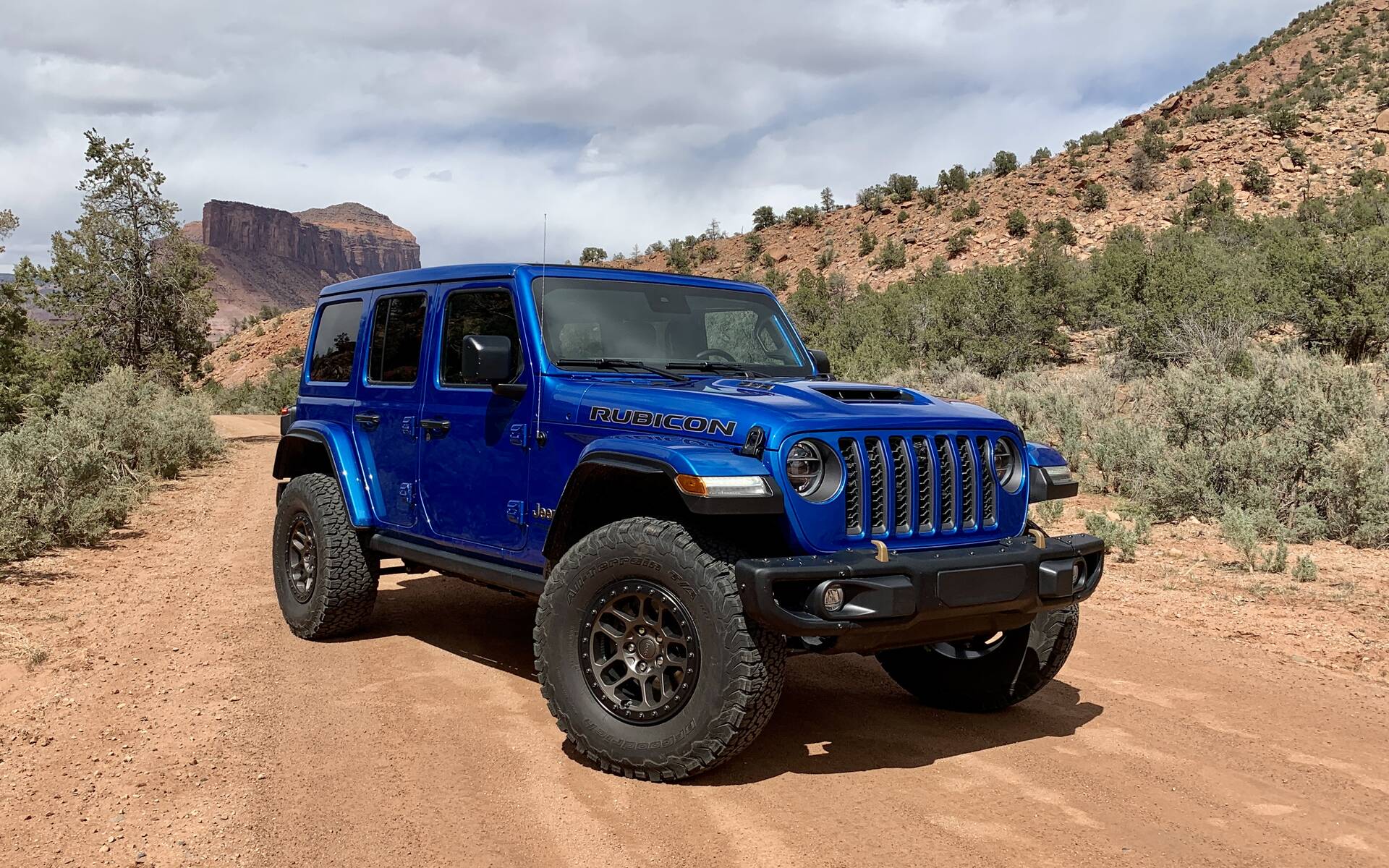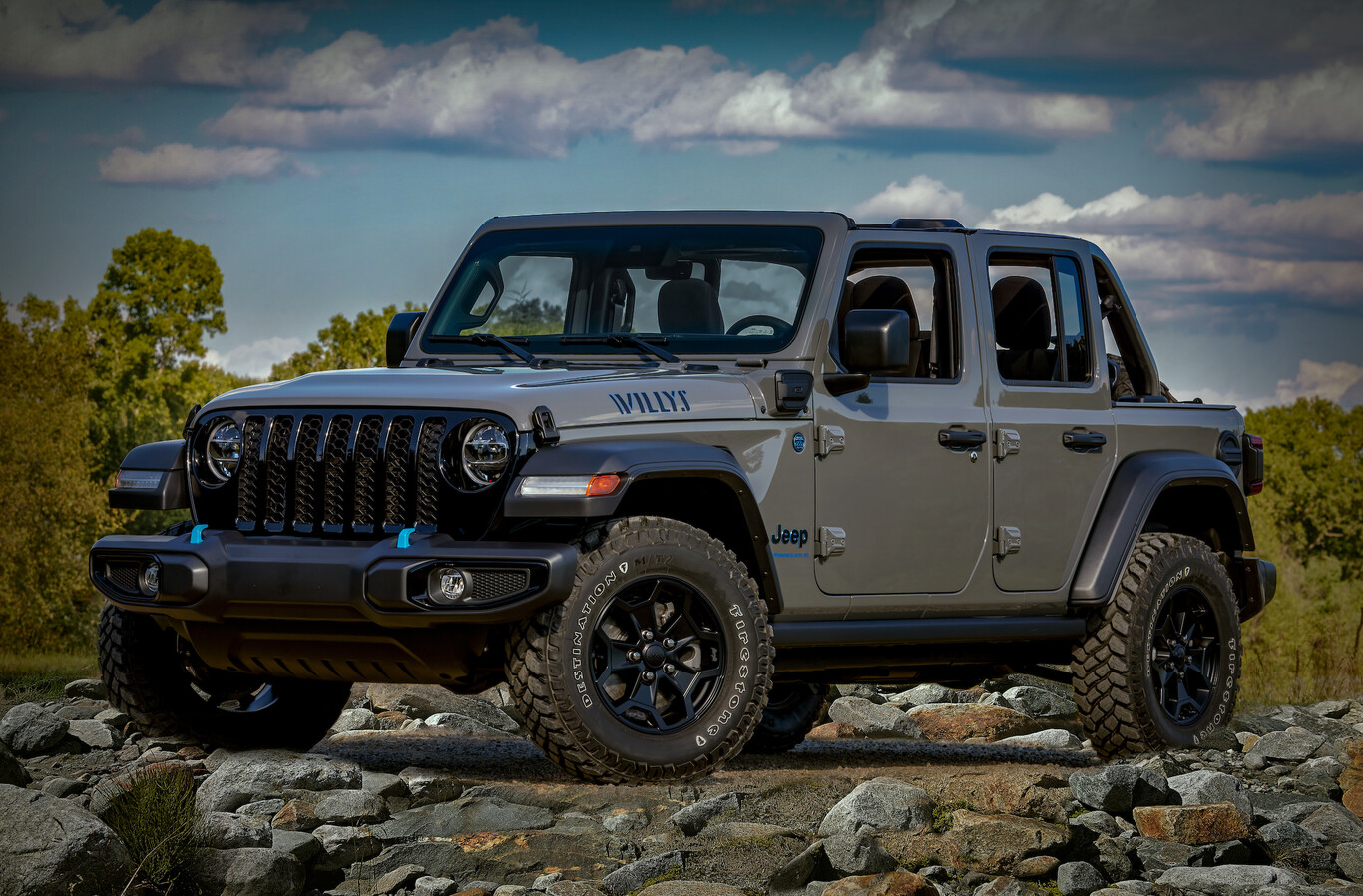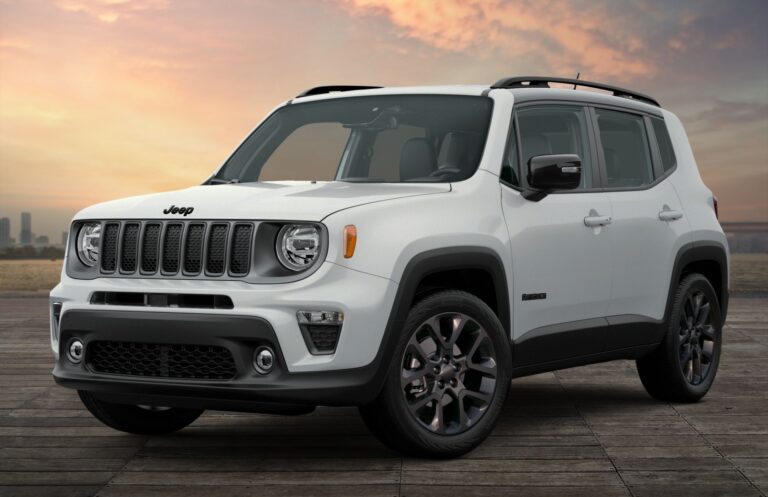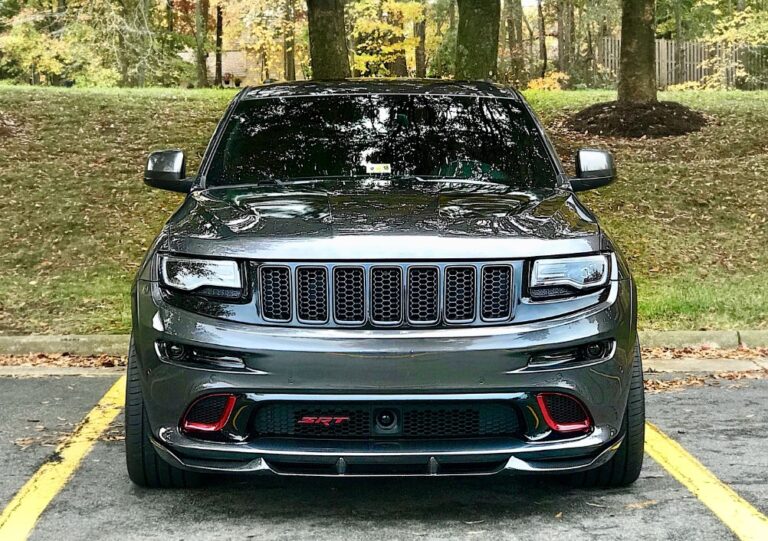Jeep Dana 44 For Sale: Your Ultimate Guide to Finding the Perfect Upgrade
Jeep Dana 44 For Sale: Your Ultimate Guide to Finding the Perfect Upgrade jeeps.truckstrend.com
The allure of the open trail, the challenge of technical terrain, and the freedom of off-road adventure—these are the hallmarks of Jeep ownership. But for many enthusiasts, the stock components eventually hit their limits. When it comes to axle strength, durability, and the ability to handle larger tires and more aggressive driving, one name consistently rises to the top: the Dana 44. If you’re searching for "Jeep Dana 44 for sale," you’re likely on the path to a significant upgrade that will transform your Jeep’s capabilities.
This comprehensive guide will delve into everything you need to know about finding, evaluating, and purchasing a Dana 44 axle for your Jeep. From understanding its legendary status to navigating the various types and crucial buying considerations, we’ll equip you with the knowledge to make an informed decision and propel your off-road adventures to the next level.
Jeep Dana 44 For Sale: Your Ultimate Guide to Finding the Perfect Upgrade
Understanding the Dana 44 Axle: A Foundation of Strength
The Dana 44 is a legendary axle, renowned for its robust design and impressive strength, making it a highly sought-after upgrade or replacement for Jeep owners. Manufactured by Dana Incorporated, these axles have been a staple in various automotive applications for decades, but their popularity among Jeep enthusiasts is unparalleled.
Why is the Dana 44 so popular for Jeeps?
Compared to the weaker Dana 30 (often found in front of many stock Jeeps) or even some lighter-duty rear axles, the Dana 44 offers a significant leap in durability. Its key features include:
- Larger Ring Gear: Typically an 8.5-inch diameter, providing a larger contact patch for more strength.
- Stronger Axle Tubes: Generally thicker-walled than Dana 30s, reducing the risk of bending.
- Larger Pinion Bearing: Offers better support and longevity.
- Greater Aftermarket Support: An enormous array of lockers, gears, and chromoly axle shafts are available, allowing for extensive customization and further strengthening.

This combination of factors makes the Dana 44 an ideal choice for Jeeps running 35-inch tires or larger, engaging in aggressive rock crawling, or carrying heavy loads.
Why Upgrade to a Dana 44? Unlocking Your Jeep’s Full Potential
The decision to invest in a Dana 44 axle is often driven by a desire to push your Jeep’s limits without fear of component failure. Here are the primary reasons Jeep owners seek out Dana 44s for sale:
![]()
- Increased Strength and Durability: The most compelling reason. A Dana 44 can withstand significantly more abuse than a stock Dana 30 or light-duty rear axle, especially when tackling challenging trails or running larger, heavier tires.
- Accommodates Larger Tires: While some stock axles can handle 33-inch tires, anything larger (35s, 37s, or even 40s) puts immense stress on weaker components. A Dana 44 is designed to handle these increased loads with appropriate upgrades.
- Enhanced Off-Road Performance: With a stronger axle, you can confidently engage in more aggressive maneuvers, climb steeper obstacles, and traverse rougher terrain without worrying about breaking axle shafts or damaging differentials.
- Wider Range of Gear Ratios and Lockers: The Dana 44 has a vast aftermarket for gear sets, allowing you to fine-tune your Jeep’s performance for specific tire sizes and driving conditions. Moreover, a wide variety of selectable and automatic lockers are readily available, significantly improving traction.
- Foundation for Future Upgrades: Installing a Dana 44 provides a robust foundation for further modifications, such as engine swaps, heavy-duty suspension components, and more, without having to worry about axle limitations.

Types of Dana 44 Axles You Might Find For Sale
When searching for a "Jeep Dana 44 for sale," you’ll encounter a variety of options, each with its own pros and cons:
1. OEM Pull-Outs (Used)
These are Dana 44 axles removed from factory Jeeps or other vehicles. They are often the most budget-friendly option but come with inherent risks.
- Jeep Models Known for OEM Dana 44s:
- TJ Wrangler Rubicon: Both front (high pinion) and rear (low pinion) Dana 44s are highly sought after due to their direct fit and desired features.
- JK Wrangler Rubicon: Both front and rear Dana 44s, often with electric lockers. The front JK Dana 44 is a low pinion design.
- XJ Cherokee/MJ Comanche: Rear Dana 44s were optional in some years.
- YJ Wrangler: Rear Dana 44 was an option in some models.
- CJ Series: Rear Dana 44s were common.
- ZJ Grand Cherokee: Some V8 models came with a rear Dana 44a (aluminum housing), which is generally less desirable for heavy off-roading due to its weaker housing.
- Pros: Lower cost, factory fit (if from the same vehicle generation), readily available from junkyards or parts-outs.
- Cons: Unknown history, potential for wear and tear (bent tubes, worn bearings, damaged gears), may require rebuilding, and might not have the desired gear ratio or locker. Specific widths and mounting points might not match your application.
2. Aftermarket/Crate Dana 44s (New)
These are brand-new axles manufactured by companies specializing in off-road components. They offer superior strength and customization.
- Leading Brands: Currie Enterprises, Dynatrac, G2 Axle & Gear, Teraflex, Artec Industries.
- Pros: Brand new components, often built with stronger materials (e.g., thicker tubes, chromoly shafts), custom widths and mounting options, choice of gear ratios and lockers, warranties.
- Cons: Significantly more expensive than used OEM axles.
3. Hybrid/Custom Built Dana 44s
Sometimes, an axle builder will take an OEM housing and reinforce it, or combine elements from different axles to create a custom solution. This is common for specific project builds requiring unique widths or mounting.
Key Considerations When Buying a Dana 44
Purchasing a Dana 44, especially a used one, requires careful evaluation. Here’s what to look for:
- Front vs. Rear: Determine whether you need a front axle, a rear axle, or both. They are distinct units.
- Axle Width (WMS to WMS): This is CRITICAL. The width from wheel mounting surface (WMS) to WMS must match your vehicle or be compatible with your desired stance. Common widths vary significantly between Jeep models (e.g., TJ, JK, XJ, CJ). Too wide, and your tires will stick out excessively; too narrow, and you’ll lose stability.
- Gear Ratio: Check the existing gear ratio in the Dana 44 you’re considering. It needs to match your existing axle’s ratio (if only buying one) or be suitable for your tire size and engine (if buying a pair or re-gearing both). Re-gearing is an additional cost.
- Lockers/Limited Slips: Does the axle come with a locker or limited-slip differential? Factory Rubicon axles come with electric lockers, which can be a huge bonus. Aftermarket axles often allow you to specify the locker.
- Axle Shafts: Are they stock or upgraded chromoly shafts? Chromoly shafts are significantly stronger. Inspect shafts for twisting or damage.
- Brake Setup: Does it come with disc brakes or drum brakes? Does the bolt pattern (e.g., 5×4.5, 5×5, 6×5.5) match your wheels?
- Mounting Brackets: Are the spring perches, control arm mounts, and track bar mounts compatible with your Jeep model? For OEM pull-outs, these are often vehicle-specific. You might need to grind off old mounts and weld on new ones, which adds to the cost and complexity.
- High Pinion (HP) vs. Low Pinion (LP): Primarily for front axles. High pinion designs offer better driveshaft clearance and strength in forward motion, making them generally preferred for front applications. Low pinion is common for rear axles.
- Condition (for Used Axles):
- Housing: Check for bent tubes, cracks, or severe rust. A straightedge across the axle tubes can help identify bends.
- Differential Cover: Look for leaks or impact damage.
- Pinion and Yoke: Check for excessive play (in and out, or side to side), which indicates worn bearings. Ensure the yoke matches your driveshaft U-joint size.
- Gears: If possible, remove the cover and inspect the gear teeth for chips, pitting, or excessive wear.
- Bearings/Seals: Assume you’ll need to replace axle seals and potentially all bearings.
- Price: This varies wildly based on type, condition, included components, and demand.
Where to Find Dana 44 Axles For Sale
Your search for a "Jeep Dana 44 for sale" can lead you to several places:
- Online Marketplaces: Craigslist, Facebook Marketplace, and eBay are popular for used OEM pull-outs. Be wary of scams and always try to inspect in person.
- Specialized Jeep/Off-Road Forums: Websites like JeepForum.com, JK-Forum.com, and various regional off-road club forums often have classified sections where members sell parts.
- Junkyards/Salvage Yards: A great source for OEM axles, but require more legwork and a good eye for condition.
- Aftermarket Retailers: For new, custom-built axles, go directly to the websites of companies like Currie, Dynatrac, G2, etc., or their authorized dealers.
- Local 4×4 Shops: Many shops that specialize in Jeep modifications may have used axles for sale or can order new ones.
Tips for a Successful Purchase
- Do Your Homework: Know exactly what Dana 44 variant you need for your Jeep model and intended use.
- Inspect Thoroughly: For used axles, bring a flashlight, a straightedge, and a friend. Don’t be afraid to ask the seller to remove the differential cover.
- Ask Questions: Inquire about the axle’s history, mileage, and why it’s being sold.
- Budget Beyond the Purchase Price: Factor in costs for:
- Re-gearing (if needed)
- New lockers/LSDs
- Chromoly axle shafts
- New bearings and seals
- Brake components
- Mounting bracket modifications (welding)
- Professional installation (if not DIY)
- Shipping (can be hundreds of dollars for a heavy axle)
- Verify Compatibility: Double-check bolt patterns, spline counts, and widths before committing.
- Consider a Professional: If you’re not confident in your mechanical skills, budget for a reputable off-road shop to install and set up your new axle. Incorrect gear setup can lead to premature failure.
Potential Challenges & Solutions
- Finding the Right Fit: It can be challenging to find an OEM pull-out with the exact width, gear ratio, and mounting points for your specific Jeep.
- Solution: Be prepared to modify (grind off old brackets, weld on new ones) or re-gear. For a direct bolt-in, a new aftermarket axle is the easiest but most expensive route.
- Shipping Heavy Items: Axles are heavy and bulky. Shipping can be expensive and complicated.
- Solution: Prioritize local pickups. If shipping, get detailed quotes from freight companies and ensure the seller can properly palletize the axle.
- Hidden Damage: Used axles can have internal issues not visible from the outside.
- Solution: Thorough inspection is key. If possible, buy from a reputable seller or junkyard with a return policy. Factor in a rebuild budget for any used axle.
- Installation Complexity: Swapping axles is not a beginner-level DIY project. It involves suspension work, brake lines, driveshafts, and potentially welding.
- Solution: If unsure, hire a professional. Watch numerous online tutorials to gauge the scope of work.
Jeep Dana 44 For Sale: Estimated Price Guide
This table provides a general estimate for different types of Dana 44 axles. Prices can vary significantly based on location, condition, included components, and market demand.
| Type of Dana 44 Axle | Condition/Key Features | Estimated Price Range (USD) | Notes |
|---|---|---|---|
| The Dana 44 Axle: A True Off-Roading Icon |
When it comes to serious off-roading, the strength and reliability of your vehicle’s axles are paramount. For Jeep enthusiasts, the Dana 44 axle stands out as a veritable legend, synonymous with rugged durability and enhanced capability. This article serves as your definitive guide to understanding, finding, and acquiring a Jeep Dana 44 for sale, helping you unlock your rig’s true potential.
The Dana 44 is more than just a piece of metal; it’s a critical upgrade for any Jeep owner looking to tackle tougher trails, run larger tires, or simply ensure their drivetrain can withstand the rigors of aggressive use. Its reputation for being a robust, versatile, and highly adaptable axle has made it the go-to choice for countless builds, from mild overlanders to extreme rock crawlers. If you’re currently researching "Jeep Dana 44 for sale," you’re on the right track to a significant and rewarding investment in your vehicle’s performance.
The Enduring Appeal of the Dana 44 Axle for Jeeps
The Dana 44 has been a cornerstone of the automotive world for decades, finding its way into countless trucks, SUVs, and, most notably, Jeeps. Its popularity in the off-road community isn’t accidental; it’s built on a foundation of proven strength and design superiority over lighter-duty alternatives.
What Makes the Dana 44 So Robust?
Compared to the common Dana 30 front axle or even lighter Dana 35 rear axles found in many stock Jeeps, the Dana 44 offers several key advantages:
- Larger Ring Gear: Typically measuring 8.5 inches in diameter, the Dana 44’s larger ring gear provides a greater contact patch for the pinion, distributing force over a wider area and significantly increasing strength.
- Stronger Axle Tubes: While tube thickness can vary by application (OEM vs. aftermarket), Dana 44 tubes are generally more robust than their smaller counterparts, reducing the risk of bending under heavy stress or impact.
- Larger Pinion Bearings: These provide better support for the pinion gear, leading to improved longevity and reduced deflection.
- Superior Aftermarket Support: The sheer volume of aftermarket components available for the Dana 44 is staggering. This includes a vast selection of gear ratios, high-strength chromoly axle shafts, and an extensive range of locking differentials (lockers), allowing for unparalleled customization and further strengthening.
This combination of factors makes the Dana 44 an ideal choice for Jeep owners who are pushing beyond stock capabilities, particularly when installing larger tires (35 inches and above) or engaging in challenging off-road activities like rock crawling.
Why Upgrading to a Dana 44 is a Smart Investment
For many Jeep enthusiasts, the stock axles are often the weakest link in the drivetrain, especially once modifications begin. Investing in a Dana 44 addresses these vulnerabilities directly, providing a solid foundation for future enhancements and peace of mind on the trail.
Key Benefits of a Dana 44 Upgrade:
- Enhanced Strength and Durability: This is the primary driver for most upgrades. A Dana 44 can handle the increased leverage and impact forces generated by larger tires, heavier vehicles, and aggressive driving, drastically reducing the chances of breaking an axle shaft, bending a housing, or damaging internal components.
- Supports Larger Tire Sizes: While smaller axles might cope with 33-inch tires, 35-inch tires and larger exert immense stress on the entire drivetrain. The Dana 44, especially when combined with chromoly shafts, is designed to reliably support these larger, heavier wheel and tire combinations.
- Improved Off-Road Performance: With a stronger axle, you can approach obstacles with greater confidence. The ability to install various lockers (selectable or automatic) further enhances traction, allowing your Jeep to climb, crawl, and traverse terrain that would stop a stock vehicle in its tracks.
- Wider Gearing Options: The extensive aftermarket for Dana 44 gears means you can precisely re-gear your Jeep to optimize performance for your specific tire size and driving style, restoring lost power and improving fuel economy on larger tires.
- Future-Proofing Your Build: A Dana 44 provides a robust backbone for virtually any future modification. Whether you plan an engine swap for more power, add heavy armor, or simply load up for extended overland trips, the Dana 44 is built to handle the increased demands.
Exploring the "Jeep Dana 44 For Sale" Market: Types and Sources
When you begin your search for a "Jeep Dana 44 for sale," you’ll quickly realize there are several distinct categories of axles available, each with its own price point, advantages, and considerations.
1. OEM Pull-Outs (Used Dana 44s)
These are axles removed from production vehicles, often from junkyards, private sales, or vehicles being parted out. They represent the most budget-friendly entry point but require careful inspection.
- Common Jeep Sources:
- TJ Wrangler Rubicon: Highly desirable, as both front (high-pinion, 30-spline) and rear (low-pinion, 30-spline) axles are Dana 44s. These often come with factory air lockers.
- JK Wrangler Rubicon: Also comes with front and rear Dana 44s (low-pinion front, 30-spline; low-pinion rear, 30-spline), often equipped with electric lockers.
- XJ Cherokee / MJ Comanche: Certain models (e.g., some with tow packages) came with a rear Dana 44.
- YJ Wrangler: Some models had an optional rear Dana 44.
- CJ Series: Various CJ models offered rear Dana 44s.
- ZJ Grand Cherokee: Some V8 models had a rear Dana 44a (aluminum housing), which is generally considered weaker than a cast iron Dana 44 for heavy off-road use.
- Pros: Generally the most affordable option. Can be a direct bolt-in if sourced from the same vehicle generation.
- Cons: Unknown history and wear




